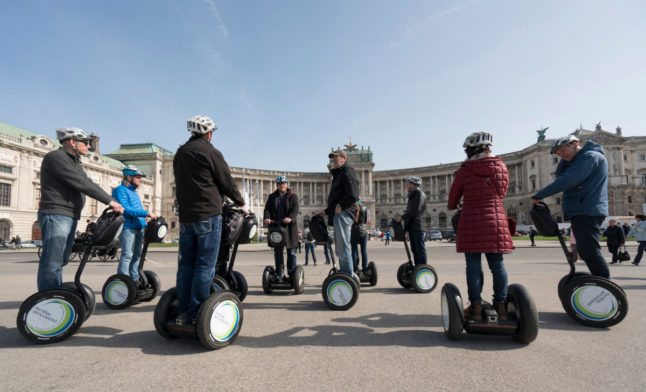The EU’s new entry and exit system (EES) is due to come into effect in May 2023, followed by the new ETIAS system in November, and between them they will have a major effect on travel in and out of the EU and Schengen zone.
EES means automated passport scans at EU external borders, which will increase security and tighten up controls of the 90-day rule – you can find a full explanation of how they work HERE.
But the system is aimed at tourists and those making short visits to Austria – not non-EU citizens who live in Austria or second-home owners with visas, and there had been questions around how those groups would use the new system.
Now the European Commission has confirmed that EES does not apply for non-EU citizens who are living in Austria, telling us: “Non-EU nationals holders of residence permits are not in the scope of the Entry/Exit System and ETIAS. More about exceptions can be found on the website.
READ ALSO: EXPLAINED: What happens if you overstay your 90-day limit in Austria?
“When crossing the borders, holders of EU residence permits should be able to present to the border authorities their valid travel documents and residence permits.”
What this means in practice is that foreigners living in Austria cannot use the new automated passport gates that will be introduced with EES in May 2023.
The reason for this is that the automated passport gates only give the option to show a passport – it is not possible to also show a residency permit or a visa.
The automated system also counts how long people have stayed in Austria or the EU, and whether they have exceeded their 90 day limit – since residents are naturally exempt from the 90-day rule, they need to avoid the 90-day ‘clock’ beginning when they enter the EU.
A Commission spokesman said: “EES is an automated IT system for registering non-EU nationals travelling for a short stay, each time they cross the external borders of European countries using the system (exemptions apply, see FAQ section).
READ ALSO: Reader question: Is travelling to Austria this winter worth it?
“This concerns travellers who require a short-stay visa and those who do not need a visa. Refusals of entry are also recorded in the system. Non-EU citizens residing in the EU are not in the scope of the EES and will not be subject to pre-enrollment of data in the EES via self-service systems. The use of automation remains under the responsibility of the Member States and its availability in border crossing points is not mandatory.”




 Please whitelist us to continue reading.
Please whitelist us to continue reading.
The choice of wording of residents “not being covered” is somewhat alarmist. If EES is for tourists and non-residents, surely residents are “exempted” – I’m not being pedantic here, it is headlines like this that create unnecessary panic…
Surely it would be more accurate to state that EU citizens of other Member States resident in Austria are “exempted” from EES? This headline is otherwise unnecessarily alarmist.